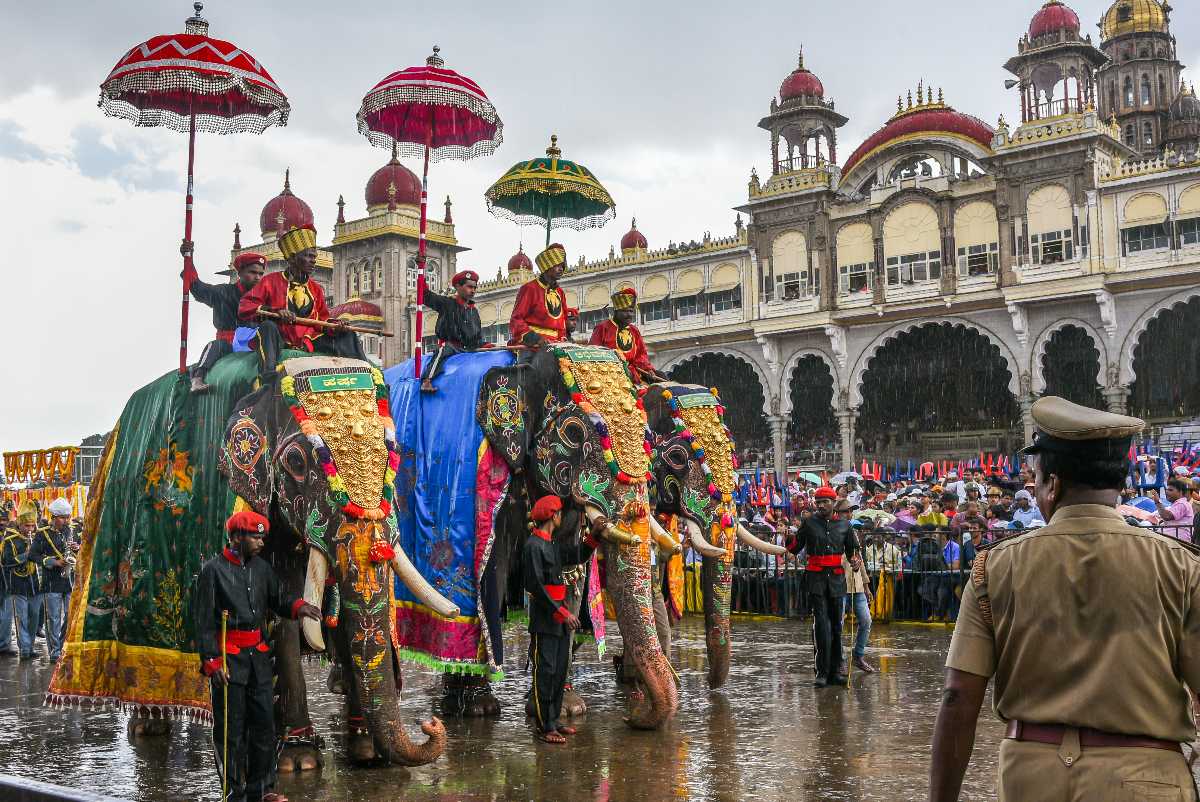As an inquisitive North-Indian soul living in Mangalore for over 3 years, I managed to learn quite a handful about Kannadigas, their culture and festivals. With time I realised that although Karnataka has its fair share of unique festivals, a lot of them are nothing but fascinating South-Indian counterparts of the common Indian festivals. Dasara for example, or Dussehra as we call it in the north, is one such festival. It is a grand 10-day celebration in Karnataka, which stretches across nine days of Navratri before concluding on the 10th day with Vijayadashmi.
During one of my extended weekend offs on the occasion of Vijayadashami, I decided to take a trip down to Mysore to witness the magnificent Mysore Dasara celebrations. I opted for a road trip, first from Mangalore to Bangalore and then, booked a reliable car rental in Bangalore with an experienced driver for the second leg of my journey to Mysore.
Highlights of Mysore Dasara Celebrations
As I reached Mysore on the fourth day of Navratri, I witnessed the entire city was adorned beautifully. I could see tourists, both Indian and foreign, swarming its decorated streets and alleys. The legend goes that years ago, Goddess Chamundeshwari killed the buffalo-headed demon Mahishasura, after whom the city got its name. Dasara is celebrated with grandeur in Mysore to signify the victory of good over evil.
Mysore Palace
The major highlight of Dasara celebrations was the breathtakingly beautiful Mysore Palace which was illuminated with one lakh light bulbs for the occasion. Although I had visited the palace during one of my previous trips, it was a sight to behold! The palace’s stunning Golden Throne was also taken out of storage and put on display in the Durbar Hall.
The Royal Touch & Jambu Savari
The festival dates back to 1610 when it was celebrated for the first time by the Wadiyar king of Mysore by offering a special puja to Goddess Chamundeshwari at Chamundi Hills. The tradition has been followed by the royal family ever since.
After the idol of the goddess was worshipped by the royal family on the last day of the festival, it was loaded on a decorated elephant and taken for the 5-km long royal procession known as the Jambu Savari. Attending the procession and witnessing the various dance troupes, music and cultural groups, folk art performances, live music bands, armed forces, paragliders, adorned horses, camels and elephants, was a unique experience for me and was an absolute treat to the eyes. Festivity was in the air!
Torch Light Parade
The 10-day Dasara celebration culminated with the phenomenal torch-light parade, also known as the ‘Panjina Kavayithu’ in Mysore. Essentially it was the last phase of the Jambu Savari, and was held at Bannimantap. The Maharaja of Mysore entered the parade grounds on a horseback where he was saluted by his military units. High ranked men of the Indian Army also performed some daredevil stunts and acrobatics. I had already watched a few YouTube videos of this spectacular parade, but attending it live was a whole new experience! The event ended with a laser show and stunning fireworks which lit up the night.
A week’s stay in Mysore at this time was probably one of the best Navratri celebrations I had ever seen. With a plethora of insights about the culture of Karnataka and at least 500 pictures in my phone gallery, I was finally ready to book my Mysore to Bangalore airport taxi. I went home with tons of beautiful memories!

